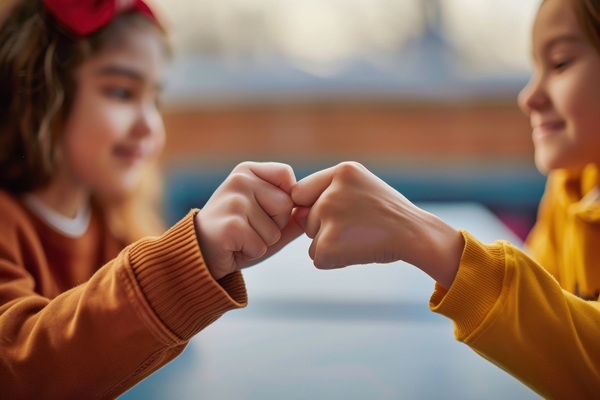Restorative practice in schools: time for a new approach?

Conflicts are part of school life, especially among young people still learning how to navigate social relationships. Schools must address conflicts effectively to create a peaceful learning environment that helps nurture pupils’ social-emotional development.
Restorative practices have emerged as a more compassionate and effective approach to resolving conflicts than simple punishment. But given the challenges schools face today, do we need a broader shift?
Conflict resolution today: why are we struggling?
Pupils are under pressure from social media, academic demands, and mental health and personal issues. Social media, in particular, can fuel misunderstandings and spread conflict outside of school, making it harder to control.
Many schools still rely on punishment methods, such as detentions or suspensions, to deal with behavioural issues, which often fail to address the root causes of conflicts or help students develop their interpersonal skills. Indeed, punishment can make already vulnerable students feel isolated or misunderstood.
Students may lack conflict resolution skills such as active listening, empathy and non-violent communication, and many teachers and staff are not trained in modern conflict management techniques. This leaves schools ill-equipped to prevent or de-escalate conflicts in a way that promotes healing and learning.
Restorative practices: a promising alternative
Restorative practices focus on repairing harm and rebuilding relationships by using restorative dialogues or circles. Everyone affected (the person who suffered harm, the person who did harm and others) can discuss their feelings and perspectives and find potential solutions. Their aim is to heal relationships rather than punish individuals.
For example, in some Estonian schools, restorative practices are used to resolve student conflicts. In one example, a group of students involved in bullying met with the person who suffered harm in a structured, facilitated dialogue in which they openly discussed how their actions had affected others. They used this dialogue to develop an understanding of the harm caused and came up with steps to repair the damage, including an apology and a commitment to better behaviour.
This approach encourages students to take responsibility for their actions and to actively take part in finding a solution. Restorative agreements help rebuild trust and ensure that pupils who do harm understand the consequences of what they did, while those who suffered harm feel heard and supported.
Restorative language: the key to constructive dialogue
A critical part of the restorative process is using restorative language, which encourages open, respectful communication. Rather than blame, it focuses on understanding and problem-solving, as shown in the examples below.
- Pupils are encouraged to express their emotions (‘I feel…’) instead of using blaming language (‘You did…’). This creates a less defensive environment and invites them to reflect.
- Instead of asking questions that blame (‘Why did you do that?’), asking for information (‘What happened?’) helps to create a neutral space to discuss what occurred without judgment.
- Inviting both participants to think about solutions that can repair relationships rather than focusing on punishment (‘How can we make things right?’).
Solutions at different levels
Effective conflict resolution in schools requires action at individual, school and systemic levels.
- Individual – focus on teaching students essential conflict resolution skills (empathy, emotional regulation, active listening). This empowers students to take ownership and eases the burden on teachers.
- School – incorporate restorative practices. Teachers and staff need ongoing training to effectively manage conflicts.
- System – policymakers must support schools with funding, resources and training. Policies should prioritise restorative methods over punitive approaches.
Time for change?
Traditional punitive methods are no longer suitable. Punishment does not address the underlying causes of conflict or help students develop the skills they need to manage their emotions and relationships. Restorative practices and restorative language can be more effective by focusing on understanding, accountability and healing.
In Estonia, a number of schools have moved (or are in the process of moving) towards incorporating restorative practices into their school culture, with promising results. Students feel more connected and see conflicts as opportunities for learning rather than just punishable offenses.
However, for restorative practices to have long-term impact, schools need systemic support, consistent training and a commitment to changing their school culture in order to shift their focus from punishment to growth and understanding. Schools can become environments where conflicts are resolved in a way that strengthens young people’s relationships and equips them with the tools they need to thrive.
Additional information
-
Education type:School Education
-
Target audience:TeacherStudent TeacherHead Teacher / PrincipalPedagogical AdviserSchool PsychologistTeacher Educator
-
Target audience ISCED:Primary education (ISCED 1)Lower secondary education (ISCED 2)

